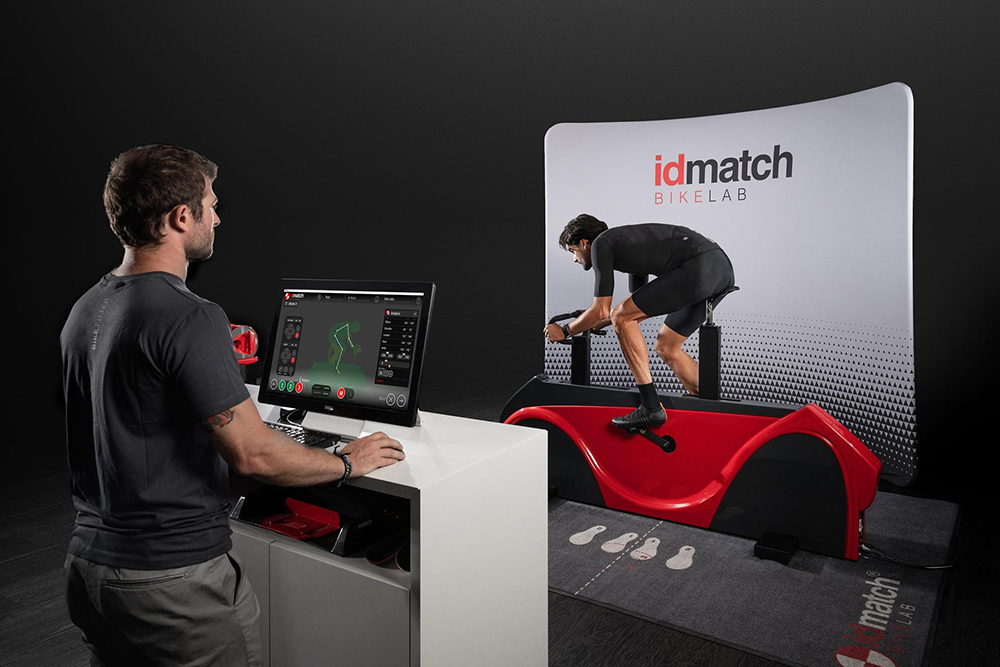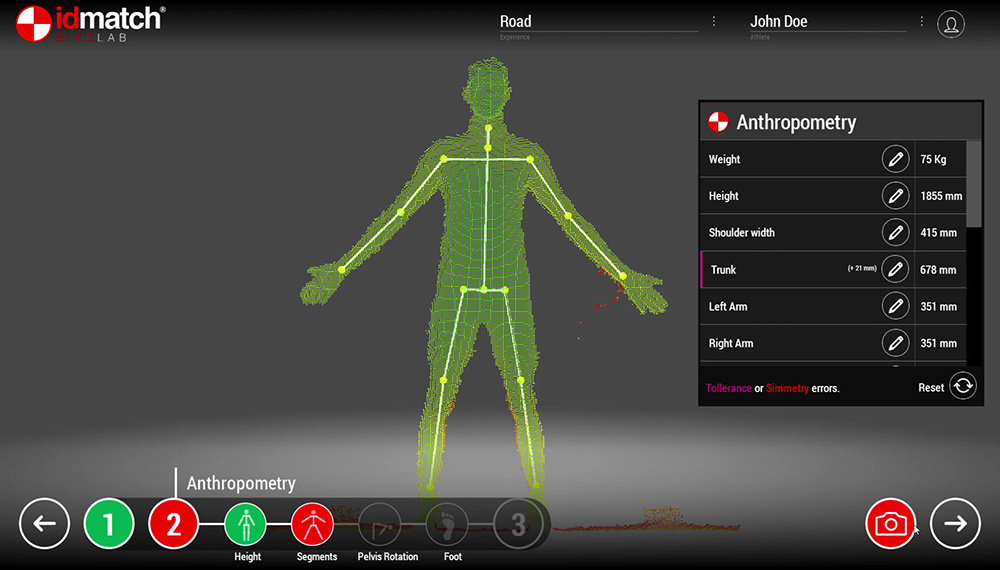
A correct bike fitting is important to obtain the very best in terms of pedalling efficiency, maintaining saddle comfort and avoiding health problems caused by poor posture. Our idmatch system stems from this need for cyclists to find their correct bike position and identify not only their ideal size bike, but also saddle and handlebars.
Successful pedalling starts even before you get onto the saddle because the correct bike position maximises the efficiency of the pedal stroke, increases saddle comfort and reduces the risk of injuries and health problems. This need is what led to idmatch, the advanced bike fitting system that allows all cyclists, whether amateur or professional, to find their ideal position combining performance and comfort, based on the principles of biomechanics and ergonomics.
The idmatch system includes a set of application tools that align each athlete’s body type with the characteristics of the equipment used, providing a personalised approach to finding their position on the bike and related accessories, such as the handlebars, saddle and crank arms. This is all included in the Bike Lab idmatch, a sophisticated system based on scientific, yet user-friendly data that it is aimed at retailers or bike fitting centres wanting to offer a comprehensive and reliable bike fitting service.
idmatch covers three worlds: bike fitting services through Bike Lab, Foot Fitting and Saddle Fitting services to find the correct bike size, saddle position, correct positioning of the cleats under the shoes, plus the ideal handlebars and saddle.
Since its launch in 2010 and subsequent presentation with Bike Lab in 2016, idmatch has become a benchmark in the cycling industry for a scientific approach to bike fitting, through the use of a 3D camera that makes an accurate scan of the cyclist, thus avoiding any subjectivity on the part of the operator. To date, there are 260 Bike Labs worldwide, set up in stores and bike fitting labs while the system database in the cloud contains a global archive of 85,000 cyclists. It is estimated that about 1,500 bike fittings are carried out with idmatch every month.
The system features three main characteristics:
Markerless – by using a 3D camera, idmatch eliminates the need for markers, i.e. the “pointers” which the operator places on the cyclist’s joints in traditional systems. idmatch thus relies on a method based on the “rules of motion” to analyse the cycling posture and dynamics.
Easy to use – idmatch is a user friendly system that does not require advanced scientific knowledge. The bike fitter undergoes specific training to learn how to use the system and relies on idmatch technology to analyse the data.
Speed – With an average analysis time of 47 minutes, idmatch optimises the bike fitting process offering rapid and accurate results.

A markerless system with 3D scanning
The first thing that stands out is that idmatch is the first markerless bike fitting system. The use of pointers often depends on the subjectivity of technicians, which may result in errors depending on their experience and the cyclist’s characteristics. The idmatch system, however, is based on data acquisition via a 3D camera that uses specific proprietary software to automatically recognise the joint connection points. The system thus acquires the points quickly and automatically, reducing the time required and minimising errors.
The data collected is cross-referenced and stored in a database in the cloud which is constantly updated with the data collected from the 260 Bike Labs worldwide, containing body type information of thousands of cyclists from all continents.
The data stored and analysis software thus allow idmatch to process the body type information of the individual cyclist and determine the ideal angles of movement. Three-dimensional body scanning also improves detection accuracy and allows movements to be analysed on all three spatial planes.
The analysis results allow cyclists to find their correct bike position and ideal configuration of all the relevant accessories for the three contact points: handlebars, saddle and pedals.
Quick and easy to use with a user-friendly interface
The bike fitter lab receives the entire hardware and software instrumentation that is ready to use.
The system is, therefore, easy to use and the entire fitting process is very quick, with an average time of 47 minutes. All this makes it a natural step to perform not only when purchasing your first bike or other accessories, but also, and above all, for follow-ups over the years as required. Lastly, the system is designed to find the bike position of cyclists in any discipline: road, gravel, mountain bike and triathlon.
idmatch fitting process
The bike fitting process with idmatch consists of five steps:
Entering personal data, goals and any physical issues or traumas
3D detection of joints – The system uses a 3D camera to detect the motion points, compare them with a global database and determine specific parameters.
Foot Fitting – The length of the foot and foot-arch, as well as the type of front foot pedal stroke, to then improve the position of the cleats under the shoes by means of the Cleat Fit tool. This step also serves to establish if the user needs a custom footbed to insert in the cycling shoe.
Analysis of accessories – The program calculates the recommended saddle, handlebar, crank arm and footbed measurements.
Positioning in the saddle: the cyclist gets on the bike and the system automatically adapts to their individual characteristics, optimising the position for better comfort and performance.
When the procedure has finished, the system suggests options for the frame, saddle and components compatible with the cyclist’s profile that can be consulted in a constantly updated catalogue.
The idmatch database contains over 200 bike brands and 10,000 bike models. It independently guides the store owner or technician in the choice of the frame size and relevant accessories.




